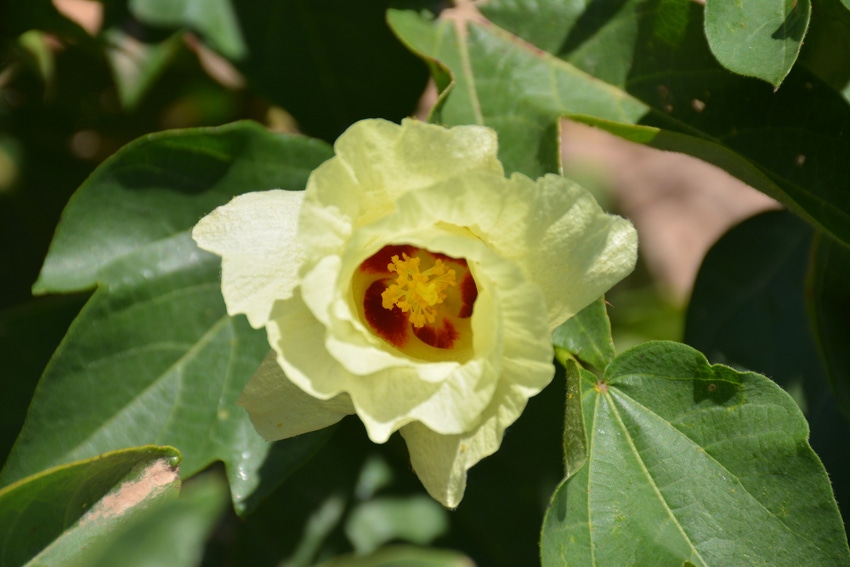September 19, 2016

The pain of $3 American Pima cotton prices and the resulting loss in markets still lingers almost six years after the fact. But the tide is turning, with improved sales and an uptick in prices.
That was the message to growers and merchants at Supima’s recent annual meeting at Coalinga, Calif. Acreage is up 23 percent in California, Arizona, New Mexico, and Texas this season, to 190,300 acres total, with a production estimate of 565,000 bales. That’s up from 433,000 bales in 2015.
Supima’s outgoing chairman, Keith Deputy of Chamberino, N.M., a Texas-New Mexico Pima grower, says Pima is on the rebound. And, says Supima President Marc Lewkowitz, “There are a lot of positive things happening right now.” He cited new products coming out soon, plus continued recognition from its design competition every year in New York — and for the first time last year, in Paris.
A presentation by three key marketers from Lands’End punctuated the positives. The company has been using and promoting American Pima for 25 years.
California’s 153,000 acres represents a 53 percent increase from last year and more than 80 percent of total U.S. American Pima production. Several at the meeting indicated that acreage could have gone higher if water had been available. Low processing tomato prices also prompted the cotton acreage increase.
Export sales for 2016/2017 are off to a robust start, with 201,300 bales already registered, compared to 70,500 last year at this time. The U.S. produces 31 percent of the world’s extra-long staple and long-staple cotton.
CONSUMPTION OUTLOOK
China is the biggest producer and consumer of ELS cotton, but its imports dropped sharply last season, from 51 percent of the world market to 35 percent. Supima’s Mark Lewkowitz says some of the loss was offset by increased sales to India, Pakistan, and Turkey.
Global supply is expected to be smaller this year than last, with total production forecast at 2.09 million bales. Carryover stocks from the 2015-2016 crop are estimated to be virtually unchanged, at 946,000 bales.
Consumption is forecast to increase further following a large increase last year to almost 2.65 million bales. Global stocks at the end of this year are expected to be 9 percent lower.
Despite water challenges, yields of American Pima have done remarkably well. Last year’s crop averaged 1,341 pounds per acre, the highest being California’s 1,494 pounds. The outlook is even better this year, with a projected average yield of 1,537 pounds per acre for the Golden State.
The biggest news in the ELS/LS world is the severance of the contract between Target and a major India textile mill, Welspun, after the retailer said it discovered that 750,000 sheets and pillowcases labeled as Egyptian cotton were actually made with non-Egyptian cotton.
While only a couple of products are involved, Target has severed its ties with Welspun for all of the company’s products.
For the latest on southwest agriculture, please check out Southwest Farm Press Daily and receive the latest news right to your inbox.
PULLED FROM STORES
“We have informed Welspun that, due to this conduct, we are in the process of terminating our relationship with them,” said Molly Snyder, a Target spokesperson. “We value the trust our guests place in us. The Target team will continue to work closely with all vendors to help insure that the products we offer our guests meet or exceed their expectations.”
The retailer pulled the items from its stores, and began notifying customers that it will give them a refund on products that were made between August 2014 and July 2016 and sold for as much as $75.
Welspun also makes towels, sheets, rugs, and carpets for 18 of the top 30 global retailers, including major clients such as Wal-Mart, JC Penney, Bed, Bath and Beyond, Costco, and Macy’s.
Lewkowitz says this issue creates an opportunity for U.S. grown American Pima cotton, but it also “reinforces our ongoing message to the textile industry about our DNA testing procedures.” With demand for luxury cotton at an all-time high, he says, “It’s becoming more important than ever to insure that the brands that use Supima, and that consumers who have come to look for our premium cotton, are getting what they pay for.”
Supima licenses more almost 359 mills and retailers to use the Supima label, certifying only 100 percent American Pima products. Supima is using DNA testing of products to insure this occurs, and to ferret out products labeled Pima, but which in most cases have proven to contain considerable Upland cotton.
About the Author(s)
You May Also Like






